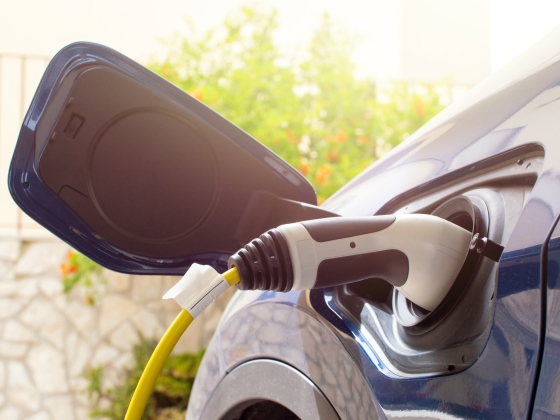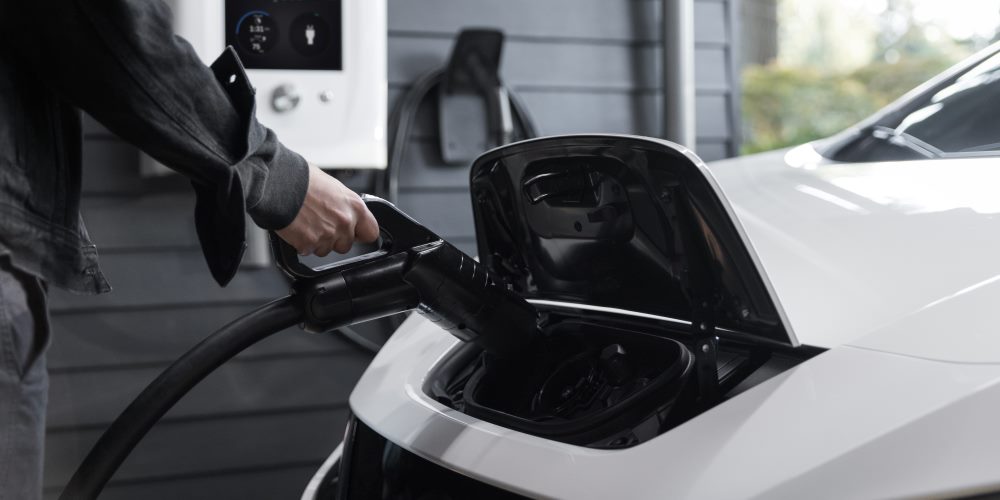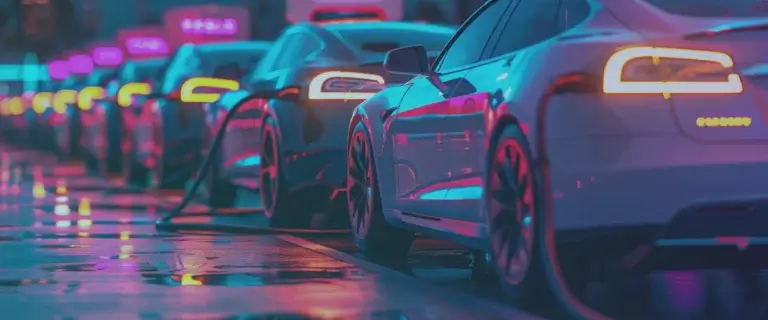Since Versinetic launched during the global lockdown in 2020, we’ve been consulting with EV charger businesses all over the world. Our engineering team has handled with all kinds of enquiries – with some questions asked more often than others.
Here, Versinetic’s Managing Director Dunstan Power answers your electric vehicle charging system design FAQs.
1. What are your EV / EV charging credentials?
Versinetic, a division of ByteSnap Design provides hardware, software and consultancy around EV charging solutions. Versinetic solutions are designed for workplace smart charge technology, public electric vehicle charging infrastructure and fleet charging stations. Its white label smart charging products are created for manufacturers and assemblers of EV charge points and for large scale installers.
Versinetic is an active member of BEAMA, the UK trade association for manufacturers and providers of energy infrastructure technologies and systems and contributes to the setting of EV policy.
Versinetic’s EV engineering team has experience designing electric vehicle charging points going back several years, to when it developed brand new software and electronics for the EV charging stations at the London 2012 Olympics.
Our engineering specialists provide customers in the UK and beyond with hardware, software and consultancy expertise under one roof. Outsourced support is available throughout the charge point development life cycle.
Smart charging technologies need to be easy to use if they are to be widely adopted. With that in mind, our engineers co-developed ViGiL (VehIcle-to-Grid Intelligent controL), the UK’s first end-to-end, fully integrated Vehicle-to-Grid system.
This system was a proof of concept and is an off-vehicle communication and control platform that is designed for different types of V2G/V2B charging points. It manages energy dispatch between EVs and buildings, while also ensuring that the voltage/thermal distribution limits aren’t exceeded.
Versinetic also has the ISO 9001:2015 certification.
2. Do you have any facts and figures around EV charger adoption rates?
According to Zap-map, there are currently 400,000 home or workplace charger locations. However, there are only approximately 34,000 public charging points across the UK, which makes up less than 10%. Having said this, as of August 2022 we’ve seen a 34% increase in the number of available public EV chargers, when compared to the previous year.
When assessing EV charger adoption, it is worth remembering that some people have multiple EVs to one home charger, some have no charger at all (especially if they don’t have off-road parking), and there are also quite a number of public, but non-domestic charging points e.g. for staff or visitors to companies.
3. What different types of EV charger system are available?
Fundamentally, there are two types of charger; destination chargers and en-route chargers.
Destination charging is overnight charging at the end of a journey when you are not in a rush to charge your vehicle.
Typically, this is your house but can also be at a workplace, hotel or friend’s/family’s house. Destination chargers are single or 3-phase AC, 7KW chargers enabling EV drivers to travel much faster since the electric car is charged to 100% overnight.
This is much better than having to stop at one or two en route charging stations.
En route chargers allow drivers to charge as fast as possible so that they can resume their journey. 50KW is the minimum output for en route DC chargers and can go up to hundreds of kilowatts.
They have a much higher power than destination chargers. The limitations are on the vehicle side as to what output it can support.

4. How can we get our new EV product to market as quickly as possible so as not to miss the window of opportunity?
Firstly, the time taken to design an EV charging system shouldn’t be underestimated.
Chargers can look quite simple in terms of what’s inside them, but in reality, they have to conform to a lot of different standards.
The software in particular, can take six to twelve months to develop, just on the dumb charging side.
Developing the OCPP protocol, and the smart charge and other elements including load balancing are tantamount to years’ worth of software effort in one single smart charger.
Secondly, to get to market faster, developers can utilise existing IP blocks and products from companies like Versinetic.
Our products are modular, allowing a company the flexibility to build its chargers with them and benefit from our vast learning in creating these chargers and rigorously testing them.
5. Who are your competitors?
We have not found a like-for-like company with EVSE expertise offering hardware, software and consultancy under one roof.
Some companies sell their chargers or controllers as white-label products but they do not offer consultancy and the product is not bespoke.
We don’t sell chargers and have a very flexible offering compared to our competitors.
6. How can we get round the lack of digital/processing/electronics/networking capability in our engineering team?
Either hiring contractors or outsourcing to external companies may be the best solution in terms of obtaining the correct expertise with the least amount of time and overall expense.
Recruiting the right people with the right skills is challenging.
Taking time to train an in-house engineering team for a specific project may not make sense in terms of time and financial outlay compared to outsourcing to a company that has a ready-trained and available team in place that you can put into play for the duration of a project.
Want to discuss your EV charger design support options? Click here to get started
7. How can we evaluate different approaches to connectivity?
Evaluating connectivity for is tricky, because there’s lots of different ways of connecting and there’s no one size fits all solution. Considerations for your EV charging system are the cost of the ongoing connection, the reliability of the connection, the set-up or deployment of that connection and the future proofing of it.
Looking at the options, there is firstly wired Ethernet which is pretty future proof. If linked into somebody else’s router, it can be extremely cheap to run. However, the cost of set-up is high, because the ethernet cables need to be routed out, therefore deployment is difficult.
During the Olympics, Versinetic had to use ethernet at underground car parks as it was the only option for connecting the chargers.
Wi-Fi is low-cost, because it piggybacks off broadband connections. Deployments are moderately difficult because SSID and credentials need to be set-up. Reliability depends on how good the Wi-Fi connection is and for many houses an external charger may not be in range of a good quality signal.
Using a cellular modem is a great option in service deployment, because it can be set up effectively in a factory, meaning that the installer doesn’t have to do that much to set up the back end. It will just work when you turn it on. The ongoing costs need to be factored in however – this includes paying SIM data costs. This makes the ongoing running cost expensive.
In terms of futureproofing, cellular standards are changing, so a future-proofed modem solution is needed.

8. How do we go about connecting our system to 4G/LoRa/etc?
For connecting to 4G, a provider that supports 4G should be selected. LoRa is not a national network and data rates are too low so it’s not really suitable for smart charger networks, nor is NB IoT, another part of the 4G standards.
9. How do I work out which is the best communication standard for my EV charging system?
Reliability, running cost, deployment ease, data rates should be considered.
A moderate data rate is required to be able to push firmware updates over your chosen communications system. Alternatively, you might need to send configuration information.
With a commercial charger, where people are authorising via smart card or similar, you need the database data to have a low latency to work really fast. For example, if a driver turns up to park and charge their EV, that charger needs to very quickly authorise that person. That’s only really possible with low latency, reasonable data rates. Therefore, that rules out some communication standards like LoRa and SigFox and also NB IoT, which is a narrowband IoT network.
10. How do we use ZigBee, Bluetooth, etc. for EV charging systems?
Zigbee has the potential to be used for load balancing a home charger, as the SMETS 2 smart meters spec has chosen Zigbee. Therefore, it could be used for connecting to UK smart meters. Through this, you could view your own meter readings live and use this to load balance against your car charger. It’s currently unclear whether this has been done before.
Bluetooth is useful for setting up and installing a new EV charger, as is apparent in the many home devices that use Bluetooth to facilitate new user set-up. It is most useful for devices that are setting up the Wi-Fi network ID. Indeed, this is likely how Google Home and Alexa work, through echo sounds.
11. Can I connect charge posts together and then connect to the cloud via a hub?
Charge posts, individually “speak” to the cloud over the aforementioned communications techniques, so a hub is not needed. However, our product, LinkRay can sit between chargers, and the cloud, to enable load balancing of groups of chargers. It passes data between the cloud based back office (CSMS) and the chargers , and it can inject OCPP messages to the chargers in order to load balance them against each other.
12. Can I implement ANPR? Can I make a free hotspot available via my equipment?
With ANPR, the automatic number plate recognition, you can implement it, but you need to effectively integrate a whole ANPR system into your charger which is not possible with our products. To do it, you would require a much more powerful CPU amongst other things. Somebody somewhere is probably doing it or working on it right now for authorisation purposes, for example, where a driver drove up into a parking space, it would authorise you based on ANPR.
The WiFi service in our products is not suitable as a general WiFi hotspot. It is used for configuration of the charger or for connecting to the CSMS.
13. How can I provide an app to use on a phone with my equipment?
An app will talk to the back office, rather than to the charger itself. Several back-office providers have their own app. The service talks to a server, and the charger talks to the same server and they both extrapolate the relevant information.
Versinetic provides a white label app solution for EV charger manufacturers needing a secure, fully customisable application.

14. Can I accept payments?
The UK and probably other countries are moving to a model where they want public chargers accessible and to be able to use them regardless of whether they are part of a network or prepaid.
There are going to be tap and pay type chargers but there are issues around needing a pin pad because contactless doesn’t always work and there are regulations around it.
If you want to facilitate payments, you need to use a third-party payment service provider, like Ingenico.
Take ticket dispensers at railway stations. The pin pads used to input your details are manufactured by Ingenico. For this element, creating your own payment terminal is untenable for an EV company due to the security and testing and the compliance elements needed.
15. What are the main challenges around EV charging system design?
In no particular order:
- Industry Standards: The main challenge is meeting ever-changing standards. There are many international standards, which are constantly changing or being updated and the charger needs to meet them all.
- Chip Shortage: Ongoing supply chain issues are still impacting the electronics design industry, affecting timescales, budgets and project viability.
- Compliance: A large part of the development time is spent on compliance testing because there are many standards for electrical equipment and electrical safety, and EV specific compliance. This takes up a large amount of budget.
- Adaptability: Being able to cope with different types of cars and new single-phase and three-phase chargers.
- Intricate Software Requirements: Complexity of software and interoperability with different standards and different third-party cloud systems.
- Realistic Pricing Expectations: There’s considerable difficulty achieving the sort of prices that people are trying to achieve, particularly in today’s market, when semiconductor prices are just going up. There are a lot of unrealistic price targets.
16. How are these challenges being handled at the moment?
Through hard work and understanding the challenges. Joining relevant, active and joining some industry bodies can help you stay abreast of standards.
17. What new technologies are being introduced into the market to resolve these issues?
This is not really a technology problem. The issues are with meeting standards, compliance requirements, and coming in at a price that is realistic.
18. What does the industry need to do to meet these challenges?
Industry bodies are good for getting different manufacturers and different parts of the supply chain together. A major concern with EV charging is the fact that the automakers don’t make the chargers and see them, instead, as a necessary evil they have to deal with.
There’s a lack of communication between the automakers and the EV charger manufacturers, where the EV charging manufacturers effectively have to defer to what the automakers are doing, rather than there being a collaboration to create systems that really work.
In addition, the automakers themselves have more than one standard on chargers, and varying types of charging cable in different countries to take into account.
This is an issue of standards again, but also around people doing their own thing rather than talking to each other. What the industry needs to do is to communicate and automakers need to involve the EV charging manufacturers with their designs.
Additionally, an agreement needs to be reached around revenue. While we’re not involved in it as Versinetic, a controversial topic in the industry is around revenues, touching on who will generate income from chargers and how the revenue will be split.
19. What does the government need to do to address concerns?
Two things:
- Consult more with industry bodies like BEAMA before making policy, as well as with automakers.
- Clarify the debate around who should run the charging networks is it the government through a central system, the energy supply company, or a private firm?
20. What is Versinetic doing to meet these challenges?
As I mentioned earlier, Versinetic is a member of BEAMA, so we are helping to shape government policy around EV charging infrastructure in the UK.
On the development side, Versinetic offers Charging Blox – a flexible, modular system of consultancy, hardware, software for the creation of bespoke chargers in rapid time, meeting international standards.
Also, to help reduce risk for companies, we have an EV Charger Development Kit; engineering teams can use these to evaluate the best options for their EV charging system design.
EV charging manufacturers trust us to help them develop the most flexible, futureproof and robust solutions.
Get in touch to request a quote to elevate your electric vehicle charger design ahead of the competition!



